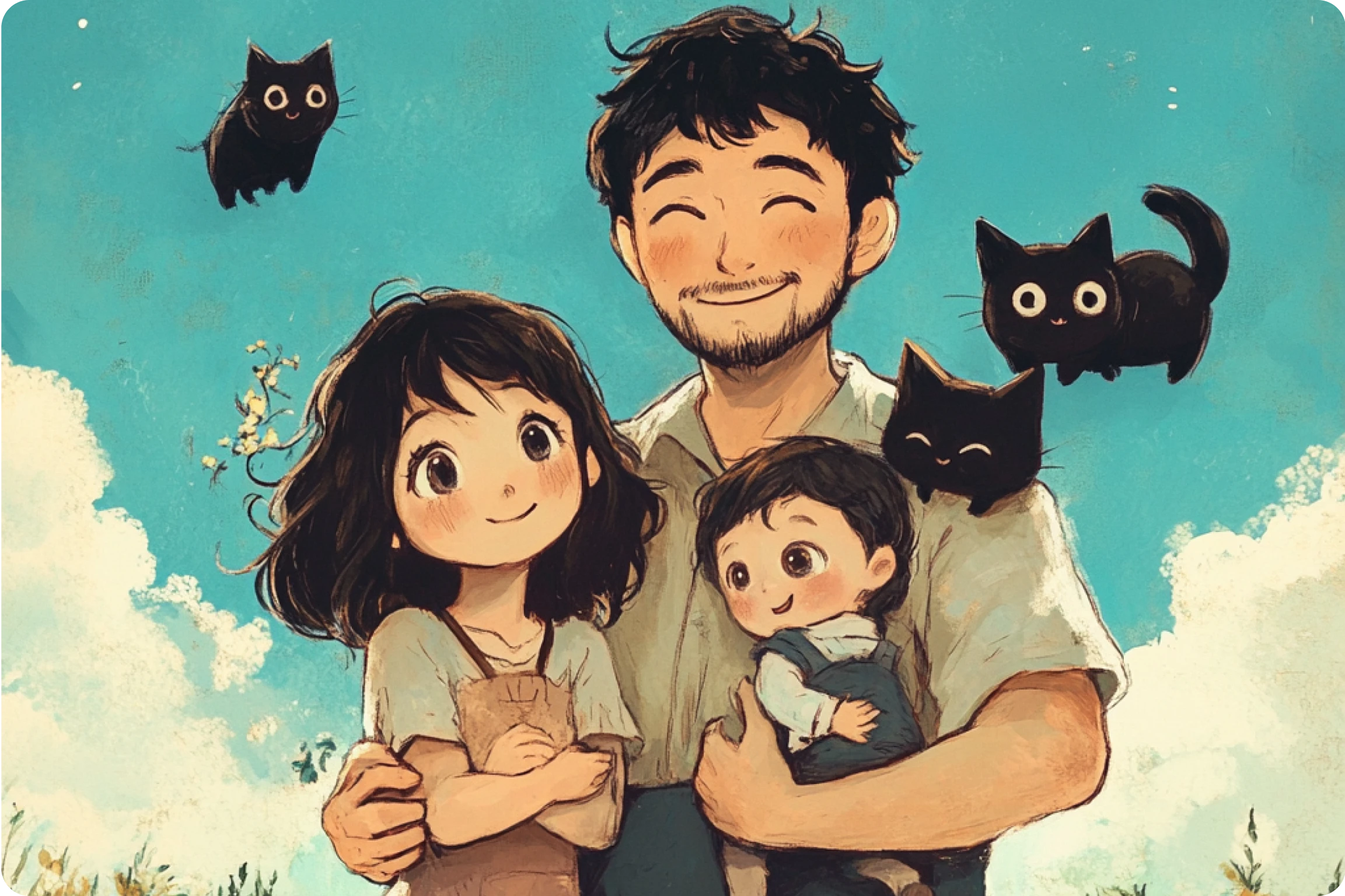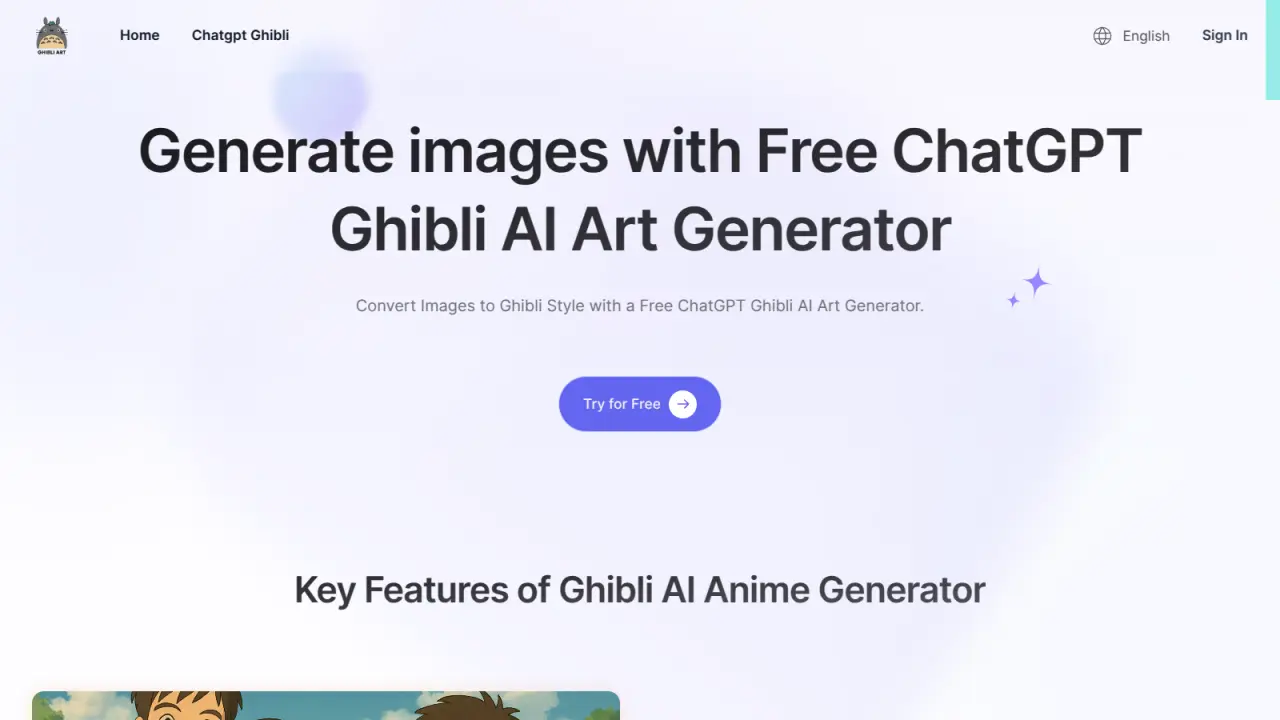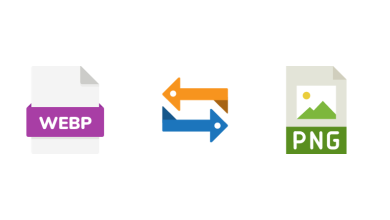If you’ve ever found yourself staring at a dreamy forest, a cozy countryside cottage, or a floating castle in the sky and thought, “This feels like a Ghibli movie,” you’re not alone. The enchanting world of Studio Ghibli has captured hearts across the globe with its whimsical visuals, heartfelt storytelling, and imaginative landscapes.
But what exactly is Ghibli-style art? Why does it feel so magical? And how are people using AI to recreate that iconic look today?
Whether you’re new to the world of Ghibli or just curious about how to bring those visuals to life yourself, this guide is for you.
What Is Ghibli-Style Art?
Ghibli-style art refers to the visual aesthetic made famous by Japan’s beloved animation studio, Studio Ghibli, co-founded by the legendary Hayao Miyazaki. From My Neighbor Totoro to Spirited Away, Ghibli films are known for their warm, detailed, and emotionally resonant art style.
Here are some key elements that define it:
1. Soft, Dreamlike Color Palettes
Ghibli scenes often use natural, earthy tones with a painterly feel. Instead of harsh contrasts, you’ll see soft gradients, glowing sunlight, and gentle shadows that evoke a sense of peace and nostalgia.
2. Lush Natural Environments
Forests, rivers, mountains, and skies are often characters in their own right. Nature in Ghibli isn’t just a backdrop — it’s alive, rich with detail, and filled with spirit.
3. Whimsical Architecture
Floating bathhouses, flying castles, and oddly charming villages are staples of the Ghibli world. These places feel real, yet slightly surreal — like something you’d dream about but never see in real life.
4. Expressive, Soft Characters
Ghibli characters have subtle facial expressions, soft outlines, and a wide range of emotions. They often wear simple, comfortable clothing and move in a way that feels natural.
5. Themes of Magic, Emotion, and Everyday Life
Ghibli art captures the extraordinary in the ordinary. A bowl of noodles, a quiet walk, or a rainy day can feel just as magical as a flying machine or mythical creature.
Why Does Ghibli-Style Art Feel So Special?
There’s a reason Ghibli art makes people feel warm inside — it taps into universal emotions.
- Nostalgia: It reminds us of childhood, nature, or simpler times.
- Wonder: The worlds are full of small surprises — soot sprites, hidden paths, floating lanterns.
- Comfort: Even in stories with tension or sadness, there’s a sense of safety and gentleness.
It’s not just about how the art looks — it’s about how it feels. Ghibli-style art invites you into a world where beauty is everywhere, and even the smallest details matter.
How Is AI Recreating Ghibli-Style Art?
Thanks to powerful AI models and style transfer techniques, you don’t need to be a master animator to create Ghibli-inspired art anymore.
In fact, many creators today use tools like the ghibli art generator by ImagineArt to turn their prompts or photos into scenes straight out of a Ghibli film. These tools are trained on visual styles similar to Studio Ghibli, allowing users to produce stunning, soft, and whimsical imagery with just a few words or image inputs.
Here’s how it works:
- You enter a prompt, like “a cottage in a flower field during golden hour, Ghibli style.”
- The AI analyzes your input, matching it to learned artistic patterns.
- It generates an image that mirrors the composition, lighting, and tone of Ghibli-style animation.
Some tools even let you upload reference images or generate characters that feel like they belong in a magical world.
Common Use Cases for AI Ghibli Art
Whether you’re a hobbyist, professional, or just someone who wants a cute desktop background, here’s how people are using Ghibli-style AI art today:
- Children’s Book Illustrations
- Posters and Prints for Room Decor
- Animated Short Scenes
- World-Building for Games or Stories
- Moodboards and Creative Inspiration
- Character Concept Art
You don’t need to know how to draw — you just need an idea and a few minutes.
The ghibli art generator by ImagineArt is particularly popular for these use cases because it lets you choose from different styles and prompt presets that replicate the iconic look with precision.
Tips for Writing the Perfect Ghibli Prompt
Writing the right prompt makes a big difference in how your image turns out. Here are a few quick tips:
- Be descriptive: Instead of “forest,” say “mossy forest with sunlight filtering through the leaves.”
- Mention emotion or mood: Try “peaceful countryside at dusk” or “mysterious floating castle in the mist.”
- Use color cues: “Warm golden light,” “soft pastel skies,” or “cool blue shadows” help set the tone.
- Add context: “A girl walking with her cat through an abandoned temple, Ghibli style.”
Here’s a sample prompt:
“A cozy kitchen with wooden beams, drying herbs hanging from the ceiling, and soft morning light streaming in through the window — in Ghibli art style.”
Try running that through the ghibli art generator by ImagineArt, and watch the magic unfold.
Final Thoughts: Bringing Ghibli to Life in Your Own Way
Ghibli-style art is more than just a look — it’s a feeling. It’s about capturing small, beautiful moments and presenting them in a way that makes the ordinary feel extraordinary.
With AI tools like the ghibli art generator by ImagineArt, that experience is no longer limited to professional animators or artists. Anyone can step into this dreamy, heartfelt world — and better yet, create their own version of it.
So whether you’re designing a floating village in the clouds or illustrating a quiet train ride through the forest, don’t be afraid to dream a little. Because in the world of Ghibli, everything — even the wind in the trees — tells a story.
Would you like me to turn this into a visual blog layout or provide image suggestions and prompt examples to pair with each section?







